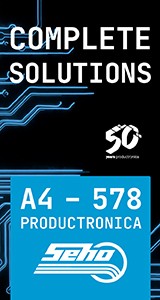A short dwell time reduces the amount of heat transferred up the lead and into the body of the component. The component load on the soldering iron is a much smaller load then the thermal load of the entire printed circuit board so a temperature of 600 – 700 F is recommended for typical soldering operations. Soldering at 500 will cause the part to overheat and create cold solder joints on the circuit board.
Edward Zamborsky
Regional Sales Manager
OK International Inc.
Ed Zamborsky is a Regional Sales & Technical Support Manager for Thermaltronics, located in New York. His position requires frequent customer visits throughout North America and the Caribbean and his position encompasses not only sales but the role of trainer and master applications engineer for all of Thermaltronics products. His expertise includes such specialties as hand soldering, convection and conduction reflow techniques, array rework, fluid dispensing equipment, and fume extraction. Ed has authored many articles and has presented many papers on topics such as; Low Volume SMT Assembly, Solder Fume Extraction, SMT Rework, BGA Rework, Lead-Free Hand Soldering, High Thermal Demand Hand Soldering, Lead Free Visual Inspection and Lead Free Array Rework.
|





